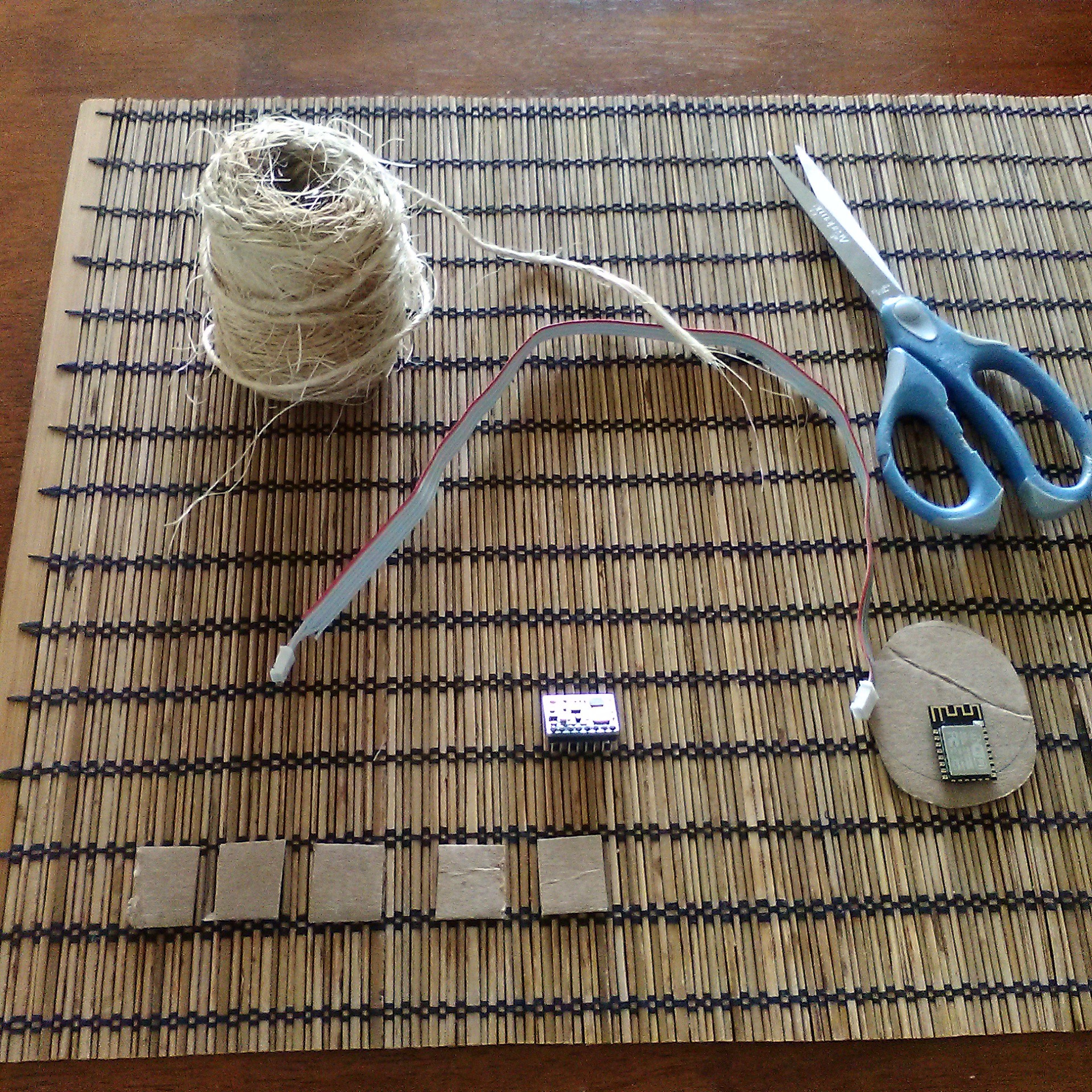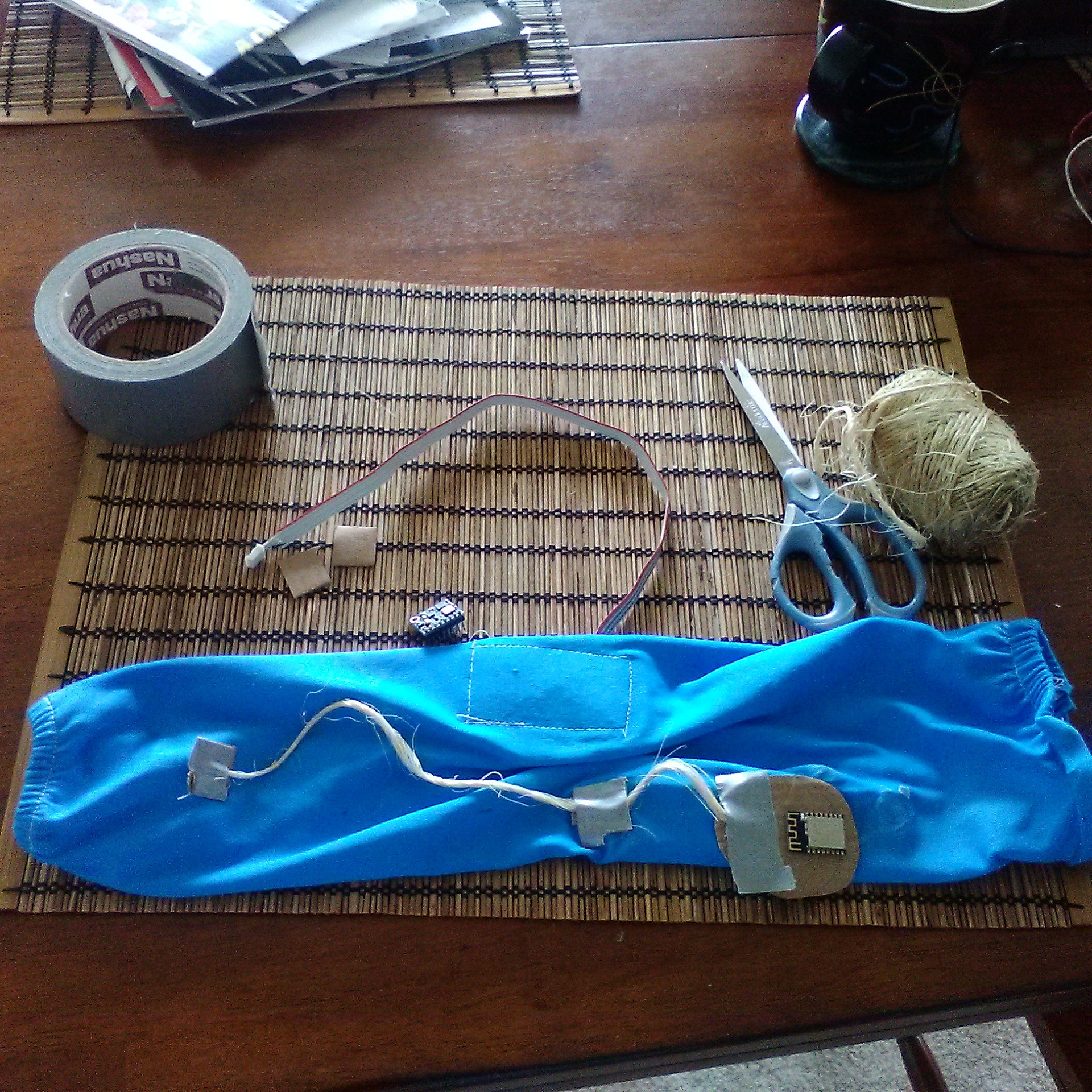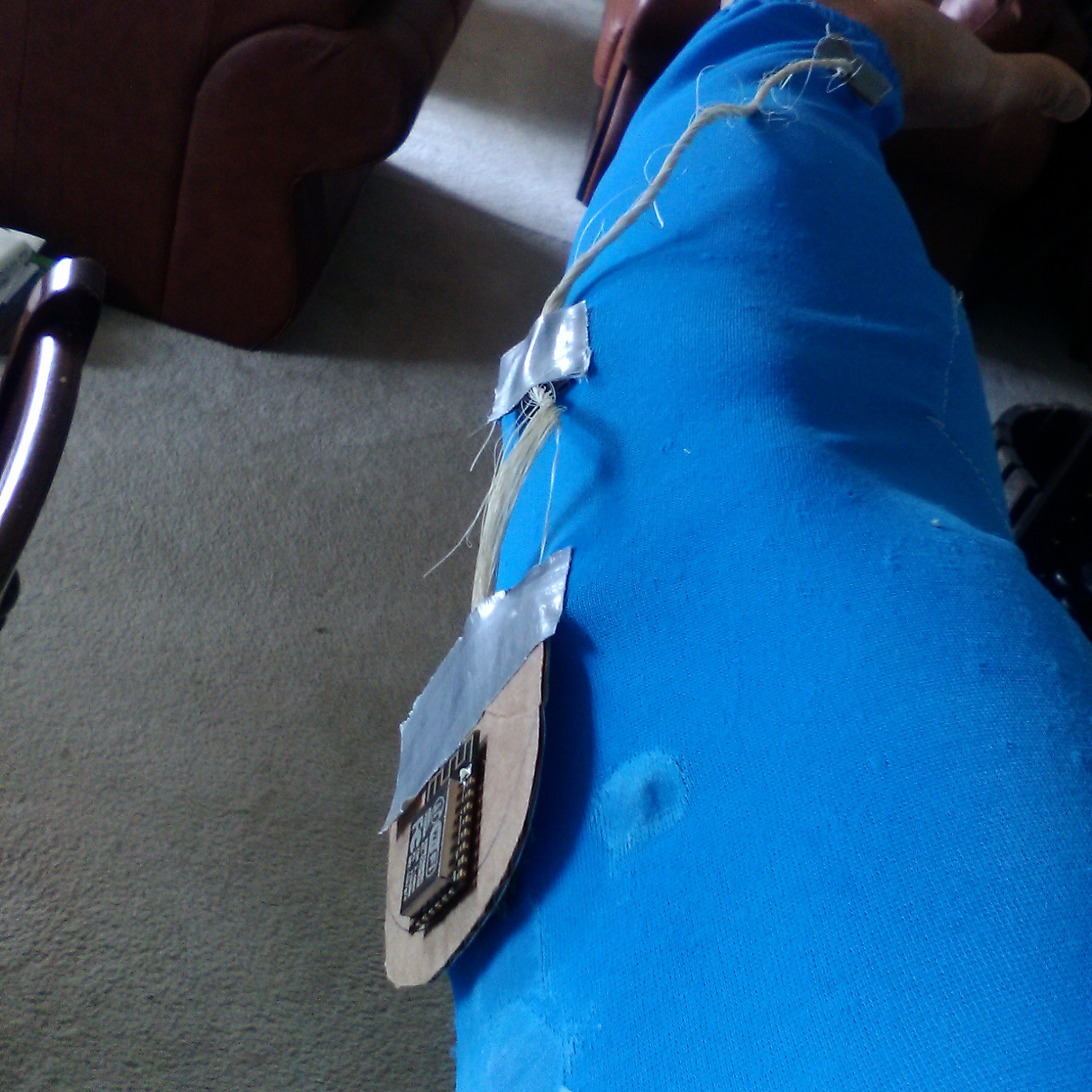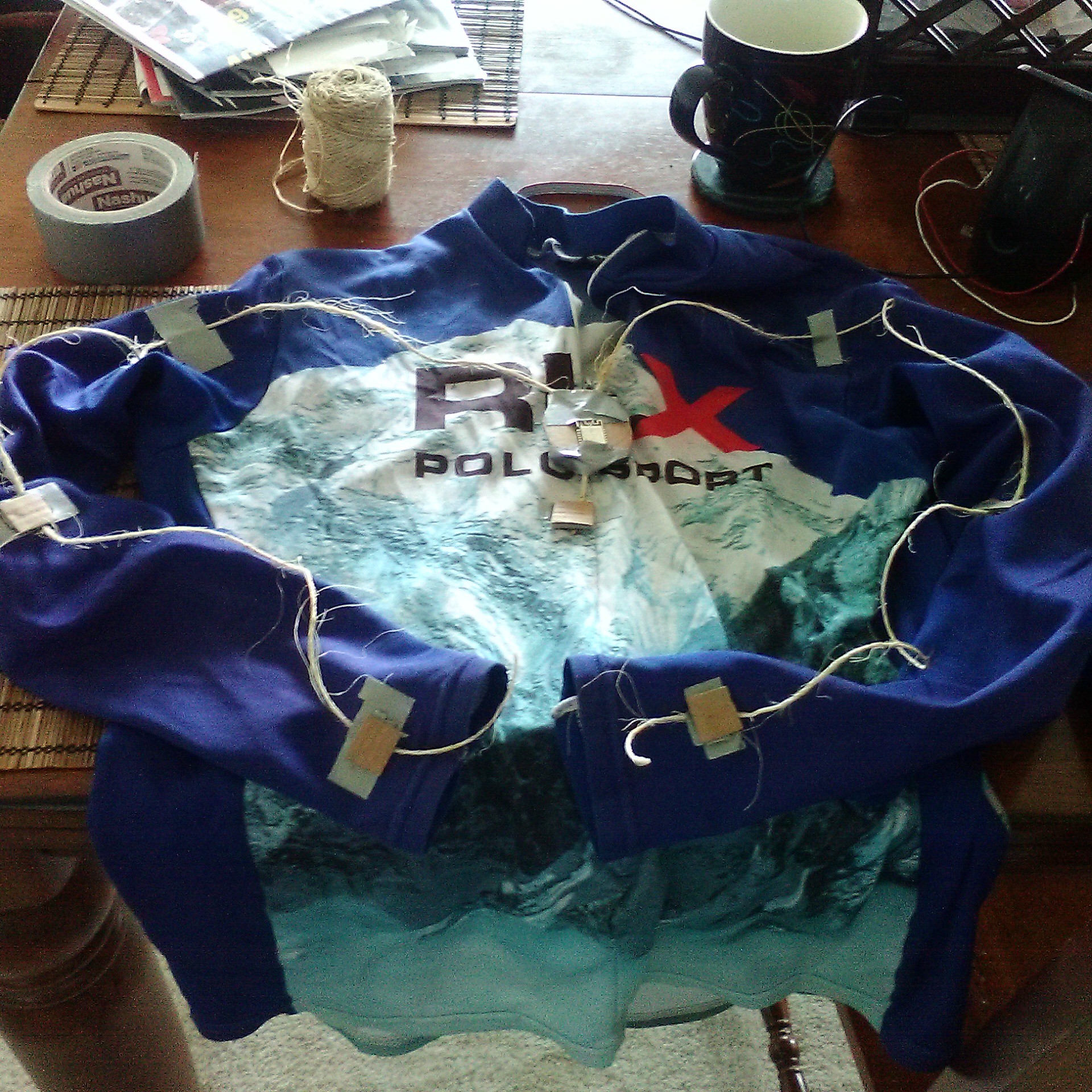
The next part of prototyping is figuring out if this is really useable for most kinds of wearables. When you do a search for wearable IoT development board, and this is kind of funny, there are two things that show up, and then my project on google. In terms of competition, I am not a fan of what's out there right now. First, there's another watch.
I f--king hate watches. Unless I'm using a watch to tell time or help me with my diving, I f--king hate wearable freaking watches. The next is this chip thing from NXP. It's small. It's got sensors. It's designed to be stuck in a watch. In fact, in terms of the competition, they're all designed to be stuck in a watch, and worse, they're all freaking bluetooth. Not a fan of bluetooth. Tell me, how many devices can you pair with bluetooth? Oh, what's that?
JUST ONE?
NOT A FAN.
Nothing out there has what I want. I want connectors. I want hackability. I want sewability, I want velcro ability, I want wifi, I WANT MESH to get multiple data reads from multiple devices, I want daisy chainability, and most importantly, I want SIMPLICITY, and EASY access to lots of already done libraries, and already done sensor boards and devices.
You want to know why? Because:
A.) I'm a hacker, and a down and dirty prototyper. I want to get the proof of concept out the door and tested so I can improve it really really fast. I don't want to waste my time outside of what I know, which is Arduino and Processing. And C/C++/Python.
And B.) Because I'm a lazy programmer. And guess what. Lazy programmers are the best kinds of programmers, because they'd rather get shit done fast, efficiently, and working well, so they can do other stuff. I don't know everything. Who needs to know everything when Arduino forums have answers for everything? I don't want to have to call some engineer to get my answers, when I can get it really fast on the Arduino forums.
But there's one other thing for me. I'm an anime fan, and I'm an anime fan of a particular series. That series is BubbleGum Crisis.

As a woman once told me, it's basically "Chick Iron Man." In the Tokyo 2040 series, at one point when the main protagonist is talking to the mysterious Sylvia Stingray, she's instructed that her inner suit is embedded with sensors that talk to the mecha suit. And in a lot of ways, that's the concept I'm prototyping.
Not another Motha F--kin Watch Wearable. How many people out there are still wearing their Fitbit after six months?! Then again, I'm not addressing that segment at all, so, you know. They're not the ones I want.
What I do know is I want something that I can wear in a suit, a glove, a kick pad, a helmet, a mask, etc.
And continuing on with the Tom Chi methodology for prototyping, aka prototyping like a 7-10 year old, I did this set of tests with these magic materials: cardboard, duct tape, and hemp twine.
You can see the egg shaped prototype, and the squares are simulating GY-88 IMU sensors. Part of the objective behind this session of prototyping is figuring out how many channel connectors do I want to put on the board. Given that the distances the sensors are communicating aren't long, both I2C and SPI would work. The advantage of I2C would be one less wire (SDL, SCK, GND, VCC) vs. SPI (CLK, MOSI, MISO, GND, VCC). But coding wise, and instrument wise, SPI has an edge, while ease of use wise, I'd give it to I2C. This is part of the engineering logistic thought process that you have to go through when making your concept real.
Next, I wanted to test out cable lengths, and sensor placement using the sleeve.
And here's a video demonstrating what the useability test is like.
So far so good! I learned that it was comfortable, the movement wasn't constrained, and having the wiring on the sleeve with sufficient give worked fine. But I'm not out to build just a sleeve. It's like the smack talk from Iron Man in Marvel vs. Capcom when he faces Nathan Spencer, the Bionic Commando.
"Just the Arm? Can't afford the rest of the suit?"
This time, I'm going to test it out with a battery in the mockup.
Adding the sensor mockups.
And then the full test.
I learned a bunch of things from this test. First, the mock up with the battery is comfortable. 2nd, and most importantly, I learned that I'd want at least 3 connector hookups for the prototyping board. And given that my instrumentation is daisy chained with the cable, it looks like I2C is the way to go to set this up, due to the ease of making master/slave combinations in the daisy chain. Of course, you can do the same with SPI, but less is more in my case.
Next up! Circuit board layout!
 Casual Cyborg
Casual Cyborg





Discussions
Become a Hackaday.io Member
Create an account to leave a comment. Already have an account? Log In.